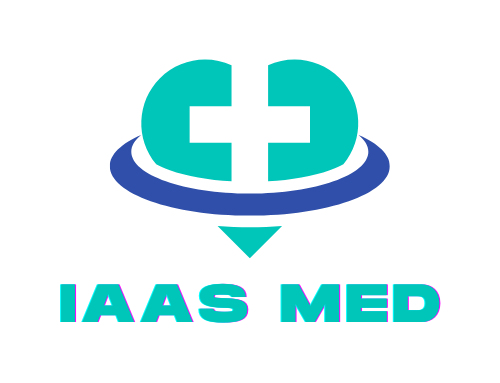Many people experience menstrual clots during their periods. While small clots are generally normal, large clots can be a cause for concern. These clots can make your period feel more uncomfortable and might be a sign of an underlying health issue. Knowing what might cause these clots can help you address them effectively and maintain your well-being.
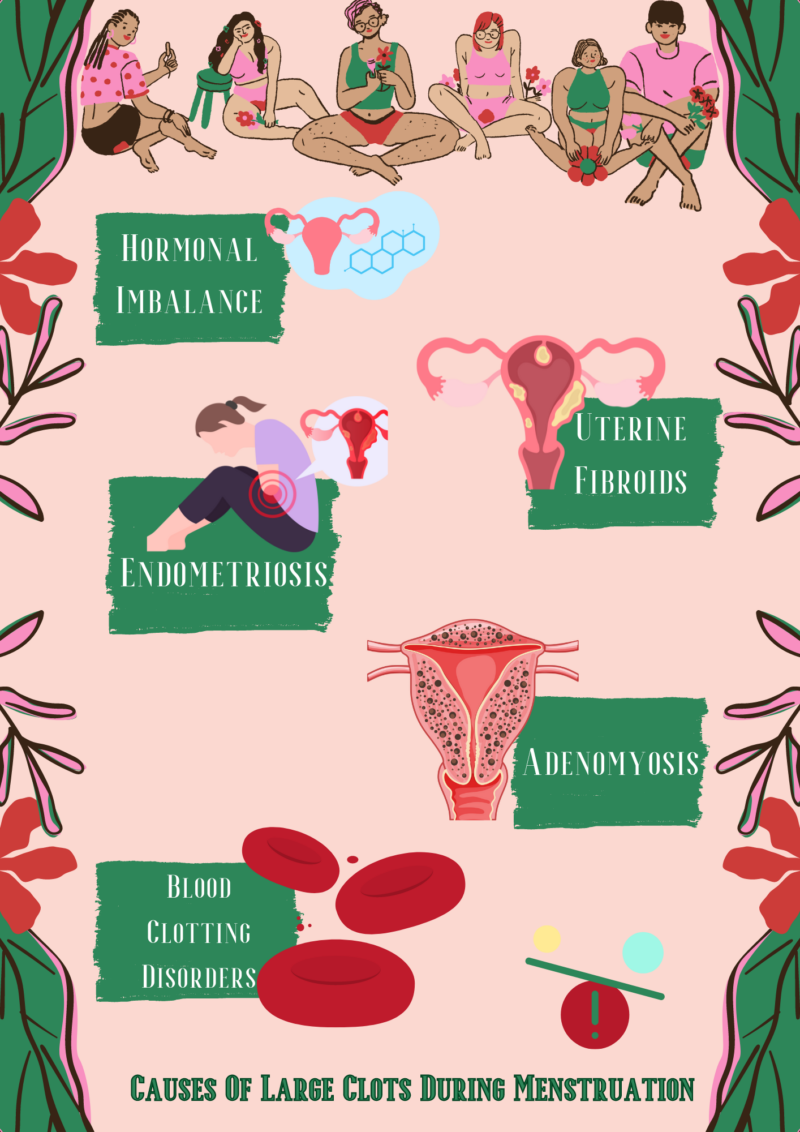
1. Hormonal Imbalance
Hormones like estrogen and progesterone play a crucial role in regulating your menstrual cycle. When these hormones are not balanced, your body might produce a thicker uterine lining. During menstruation, this thicker lining sheds in the form of larger clots.
This imbalance can also lead to irregular periods, making it difficult to predict when your period will start and how heavy it will be. Women with hormonal imbalances may also experience other symptoms such as mood swings, weight gain, and fatigue.
“You may have really small clots that might be a dime-size or a quarter-size during your period and that’s normal for you,” says Ob/Gyn Salena Zanotti, MD. “It’s problematic if you’re passing golf ball-sized clots and passing them every couple of hours.”
Common Causes
Puberty and Menopause
During these stages, your body undergoes significant hormonal changes. These transitions can cause fluctuations in hormone levels, leading to heavier periods and larger clots. Puberty typically begins between ages 8 and 13, while menopause usually starts around age 45 to 55.
Polycystic Ovary Syndrome (PCOS)
This condition can lead to irregular periods and hormonal imbalances. PCOS is characterized by the presence of multiple small cysts on the ovaries, which can interfere with regular ovulation and hormone production. Women with PCOS may also experience symptoms like acne, excessive hair growth, and difficulty getting pregnant.
Thyroid Issues
Both hyperthyroidism and hypothyroidism can affect your menstrual cycle. An overactive thyroid (hyperthyroidism) can cause lighter periods or make them stop altogether, while an underactive thyroid (hypothyroidism) can lead to heavier periods with large clots.
Thyroid disorders can also cause symptoms such as weight changes, fatigue, and changes in heart rate.
How to Manage This Problem?
Consulting with a healthcare provider is crucial. They might recommend hormone therapy, lifestyle changes, or medications to help regulate your hormones. Regular exercise, a balanced diet, and stress management techniques can also help maintain hormonal balance. Monitoring your menstrual cycle and noting any changes can provide valuable information for your healthcare provider.
2. Uterine Fibroids
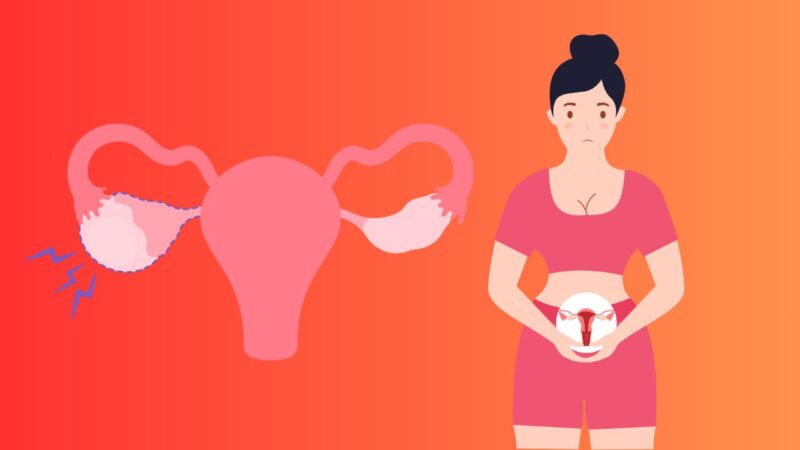
Uterine fibroids are non-cancerous growths in the uterus. They can vary in size and number, and they often cause heavy bleeding and large menstrual clots. Fibroids can develop in different parts of the uterus, including the inner lining, the muscular wall, and the outer surface.
Some women may have only one fibroid, while others may have multiple growths of varying sizes.
According to OWH, between 20 percent and 80 percent of women develop fibroids by age 50. These growths are most common in women in their 40s and early 50s. However, not all women with fibroids experience symptoms.
Symptoms
- Heavy menstrual bleeding: This is a common symptom and can lead to the formation of large clots. The bleeding can be so severe that it disrupts daily activities and requires frequent changes of sanitary products.
- Pelvic pain or pressure: As fibroids grow, they can press against other organs, causing discomfort and pain. This pressure can lead to a feeling of fullness in the lower abdomen and may be mistaken for weight gain.
- Frequent urination: Large fibroids can press on the bladder, leading to an increased need to urinate. This can be particularly bothersome at night and may result in sleep disturbances.
- Constipation: Fibroids can also press on the rectum, leading to constipation and difficulty with bowel movements.
Treatment Options
Medications
To regulate your menstrual cycle and shrink fibroids. According to a study, these can include hormonal treatments such as birth control pills, gonadotropin-releasing hormone (GnRH) agonists, and non-hormonal options like tranexamic acid.
Non-invasive procedures
Such as MRI-guided focused ultrasound surgery. This technique uses high-frequency sound waves to destroy fibroid tissue without the need for surgery.
Surgical options
Including myomectomy or hysterectomy, depending on the severity. Myomectomy involves removing the fibroids while preserving the uterus, while hysterectomy involves the removal of the entire uterus and is considered a permanent solution.
3. Endometriosis
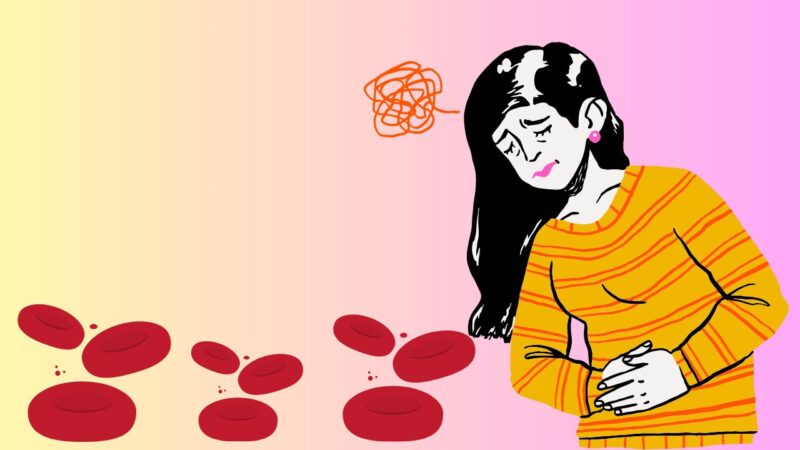
Endometriosis occurs when the tissue similar to the lining inside the uterus grows outside the uterus. This can lead to severe pain and heavy periods with large clots.
The misplaced tissue responds to hormonal changes during the menstrual cycle, causing inflammation and scarring. This can result in the formation of adhesions, which are bands of scar tissue that can bind organs together.
Symptoms
- Severe menstrual cramps: These can start before your period and last several days into your period. The pain can be debilitating and may interfere with daily activities.
- Chronic pelvic pain: This pain can occur at any time and is not necessarily linked to your menstrual cycle. It can be constant or intermittent and may radiate to the lower back and legs.
- Pain during intercourse: This can occur during or after sex and is often described as a deep, aching pain. It can significantly impact your sexual health and relationships.
- Heavy menstrual bleeding: This can include large clots and can lead to anemia and fatigue. Women with endometriosis may also experience bleeding between periods.
Managing Endometriosis
Treatment options include pain relief medications, hormone therapy, and surgical procedures to remove the endometrial tissue. Pain relief options include nonsteroidal anti-inflammatory drugs (NSAIDs) like ibuprofen.
Hormone therapy can include birth control pills, GnRH agonists, and progestin therapy. Surgery, such as laparoscopy, can be used to remove endometrial implants and scar tissue.
4. Adenomyosis
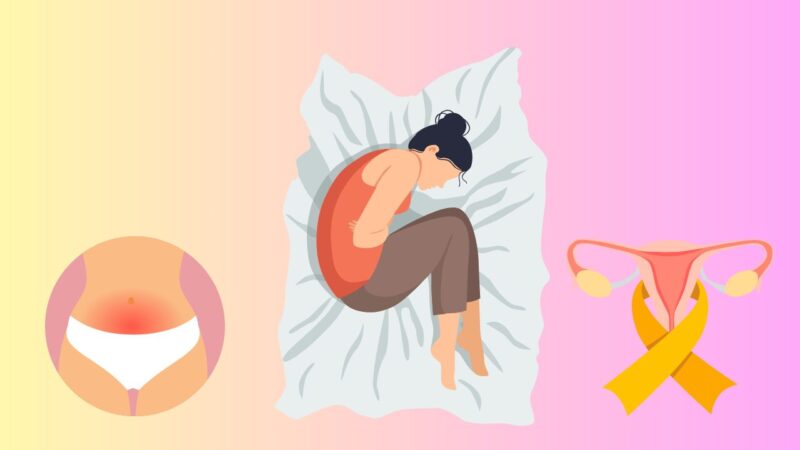
Adenomyosis is a condition where the inner lining of the uterus breaks through the muscle wall of the uterus. This can cause heavy menstrual bleeding and clots. The displaced tissue continues to function normally, thickening, breaking down, and bleeding during each menstrual cycle. This can cause the uterus to become enlarged and tender.
Symptoms
- Heavy or prolonged menstrual bleeding: This can lead to the formation of large clots and anemia. The bleeding can be so severe that it requires the use of double sanitary protection.
- Severe menstrual cramps: These can start before your period and last throughout your period. The pain can be intense and may not respond well to typical over-the-counter pain relievers.
- Chronic pelvic pain: This pain can be constant and dull or sharp and severe. It can affect your ability to perform daily activities and lower your quality of life.
- Pain during intercourse: This can occur during or after sex and can be deep and aching. It can significantly impact your sexual health and relationships.
Treatment
Options include anti-inflammatory medications, hormone therapy, and surgical interventions like endometrial ablation or hysterectomy. Anti-inflammatory medications, such as NSAIDs, can help reduce pain and bleeding.
Hormone therapy can include birth control pills, progestin therapy, and GnRH agonists. Endometrial ablation involves destroying the lining of the uterus to reduce bleeding, while hysterectomy is the removal of the uterus and is considered a definitive treatment.
5. Blood Clotting Disorders

Certain blood clotting disorders, such as von Willebrand disease, can lead to heavy menstrual bleeding and the formation of large clots. These disorders impact the blood’s ability to clot properly, leading to prolonged and excessive bleeding.
Women with clotting disorders may experience heavy periods from a young age and may also have a family history of bleeding disorders.
The Centers for Disease Control and Prevention (CDC) states that von Willebrand disease affects up to 1 percent of the U.S. population.
How to Recognize It
- Heavy menstrual bleeding from a young age: This can include periods that last longer than seven days or require the use of double sanitary protection. Women with clotting disorders may also pass large clots and experience symptoms of anemia, such as fatigue and shortness of breath.
- Frequent nosebleeds: These can occur without any apparent cause and may be difficult to stop. Nosebleeds can be a sign of an underlying bleeding disorder and should be evaluated by a healthcare provider.
- Easy bruising: Women with clotting disorders may develop bruises easily, even from minor bumps or injuries. The bruises may be large and painful and take a long time to heal.
- Prolonged bleeding from cuts: Small cuts and injuries may bleed for an extended period and may require medical intervention to stop the bleeding. This can be particularly concerning during surgeries or dental procedures.
Treatment and Management
Managing these disorders often involves medications to help blood clot properly, such as desmopressin or clotting factor concentrates. Desmopressin is a synthetic hormone that helps increase the levels of clotting factors in the blood.
Clotting factor concentrates are used to replace missing or deficient clotting factors. Women with clotting disorders may also benefit from hormonal treatments to reduce menstrual bleeding, such as birth control pills or an intrauterine device (IUD).
In Summary
If you’re experiencing large clots, consulting a healthcare provider is crucial for an accurate diagnosis and appropriate treatment. Taking control of your menstrual health is essential for your overall well-being. Stay informed, and don’t hesitate to seek professional advice if you notice significant changes in your menstrual cycle.
Related Posts:
- First Time Under the Knife: What to Expect Before,…
- What is Incarcerated Hernias? - Causes, Symptoms,…
- 5 Causes And Symptoms Of Breast Itch In Women
- What’s Behind Gluten Sensitivity? 10 Causes You Need to Know
- Sleep Apnea 101 - Symptoms, Causes, and Risk Factors
- What Causes a Vein to Burst in Your Leg and How to…
